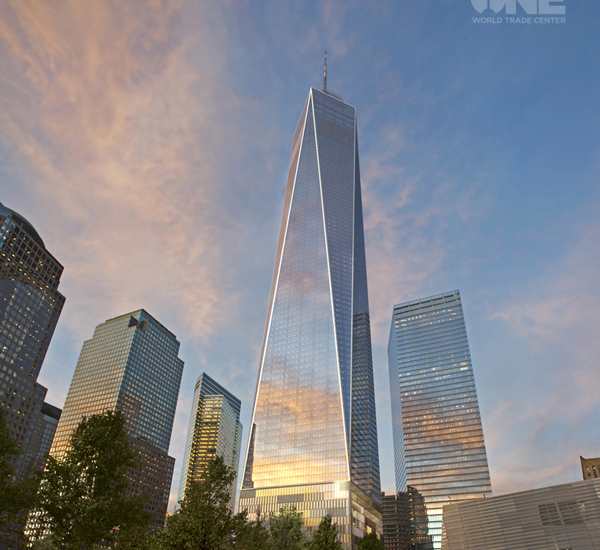PANYNJ Report: Sell Assets, Limit CRE Investment Not ‘Integral’ to Transportation
The Port Authority of New York and New Jersey manages a real estate portfolio with more than 12,000 acres of land as well as 45 million square feet of office, industrial and retail space. But unless those assets move people or cargo, they are soon likely to have a for sale sign slapped on them.
By Gail Kalinoski, Contributing Editor
The Port Authority of New York and New Jersey manages a real estate portfolio with more than 12,000 acres of land as well as 45 million square feet of office, industrial and retail space. But unless those assets move people or cargo, they are soon likely to have a for sale sign slapped on them.
A 100-page report released Christmas weekend by a panel appointed to make recommendations for the agency’s future repeatedly stressed that “reform at the Port Authority must begin with a recommitment to the core transportation mission.”
The report recommends “prudently divesting existing real estate holdings” and restricting future investments only to those that are “integral” to transportation. For example, the panel urges the construction of a new Port Authority Bus Terminal in Manhattan.
But topping the list of assets recommended for sale are those at the World Trade Center site, including 1 World Trade Center, the 1,776-foot tall office tower that recently opened in Lower Manhattan and is now about 61 percent occupied.
“The Panel acknowledges the important role played by the Port Authority in spurring economic growth in Lower Manhattan with the original World Trade Center development, and applauds the leadership shown by the Authority in rebuilding the site in the years since the September 11 attacks. As that rebuilding nears completion, however, the Port Authority must refocus and recommit its efforts to the transportation needs of the region,” the report states.
The Port Authority owns 90 percent of 1 World Trade Center while The Durst Organization has the remaining 10 percent stake. A spokesman for The Durst Organization referred all questions about the recommendations to the Port Authority and a spokesman for the Port Authority told Commercial Property Executive Tuesday there would be “no additional comment beyond what is in the report.”
While the report recommends the Port Authority “pursue a substantial reduction of its ownership and operational role at the WTC,” it also notes that it will likely take several years to do so because of the “enormous capital investment” made by the agency as well as the “national significance” of the site.
John Degnan, Port Authority chairman, told the Wall Street Journal, “We’ve spent billions of dollars to build the World Trade Center – I’m not getting rid of it on a fire sale.”
He told the newspaper he believed it would eventually be a “profitable venture” for the Port Authority.
Shortly before the attacks on 9/11, the Port Authority had agreed to privatize the original WTC site by signing a 99-year lease with developer Larry Silverstein. Now, Silverstein has a net lease for three towers at the site – 2 World Trade Center, 3 World Trade Center and 4 World Trade Center. Of the three only, 4 World Trade Center, a 72-story office tower, has been fully completed. The Port Authority owns the land under the buildings.
The Port Authority has also made two deals with Westfield worth a total of $1.4 billion for the retail complex at the WTC, the most recent being finalized in early 2014 for $800 million. Part of the retail is located at the Transportation Hub, the 800,000-square transportation center due to open in 2015.
Land for 5 World Trade Center is currently owned by the Lower Manhattan Development Corp. but will revert to the Port Authority in a swap for the area where the National September 11 Memorial & Museum is located. The Port Authority is expected to sell that development site.
The Port Authority owns several assets in New York and New Jersey that the report addressed including: Hoboken South Waterfront Development Facility, Essex County Resource Recovery, Port Authority Industrial Park at Elizabeth, and Newark Legal and Communications Center, all in New Jersey, and the Queens West Waterfront Development Facility, Bathgate Industrial Park, Teleport on Staten Island, Red Hook Container Terminal and Brooklyn-Port Authority Marine Terminal in New York.
The report suggests exploring alternative uses for some port facilities that consistently underperform financially, like the Brooklyn-Port Authority Marine Terminal, which hasn’t moved any cargo in the last four years and averaged losses of $5 million over the past five years. The Red Hook Container Terminal has an operating loss of about $8 million each year and low cargo volumes. The report noted Phoenix Beverage began a five-year lease in September 2013 at Red Hook, “which is expected to reduce the Port Authority subsidy to the terminal from $13 million to $3.75 million by 2017, but the terminal continues to face a number of challenges.”
The Hoboken South Waterfront Development Facility, a 50-acre, mixed-use waterfront development managed through a 50-year agreement with the city of Hoboken, is revenue producing so there are no current disposition plans being considered.
The report said disposition options are being explored at several others, including Bathgate Industrial Park in the Bronx, a 20-acre parcel with 450,000 square feet of light industrial, distribution, office and educational uses, and Teleport, a 100-acre mixed-use industrial park with five Class A office and specialized buildings totaling 700,000 square feet and three development parcels.
While the panel recommends continuing to seek ways to monetize or dispose of many of these real estate assets, it acknowledges that the “process requires coordination with numerous public and private stakeholders, and is hampered in some cases by issues, such as existing ground lease terms and conditions, real estate taxes and related PILOT agreements and zoning issues.”








You must be logged in to post a comment.